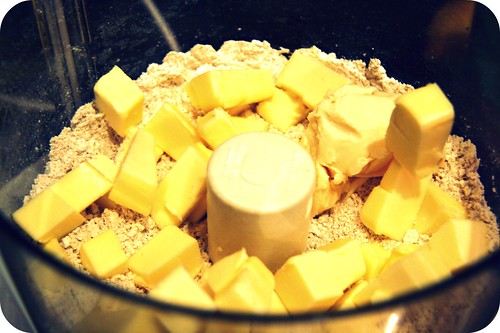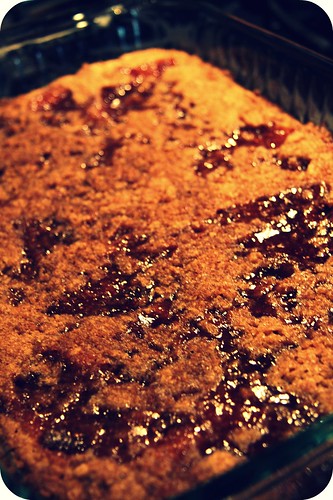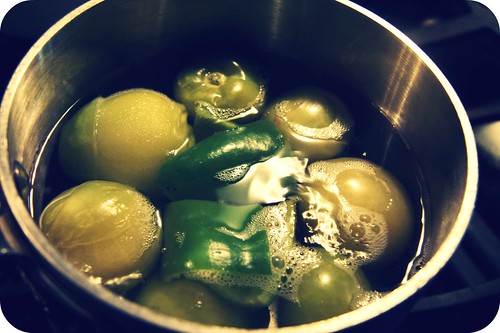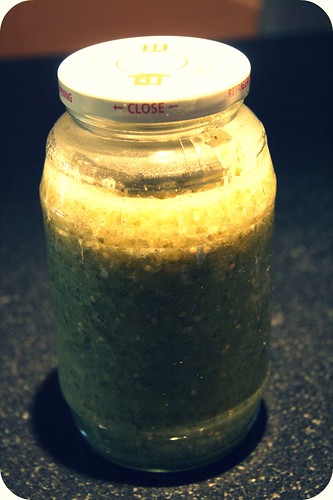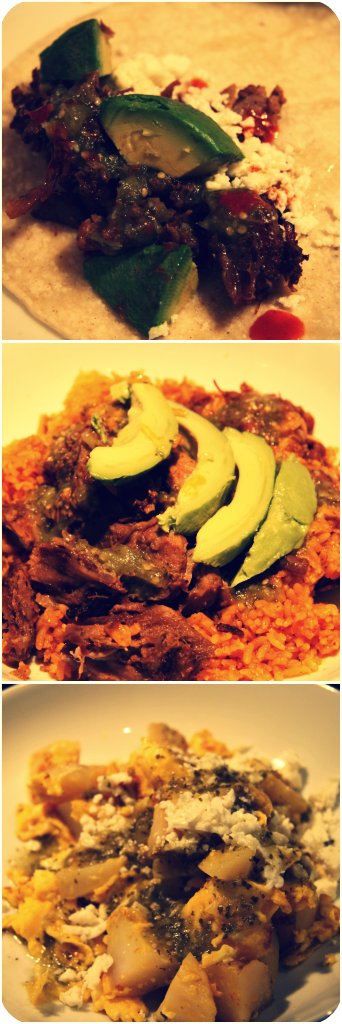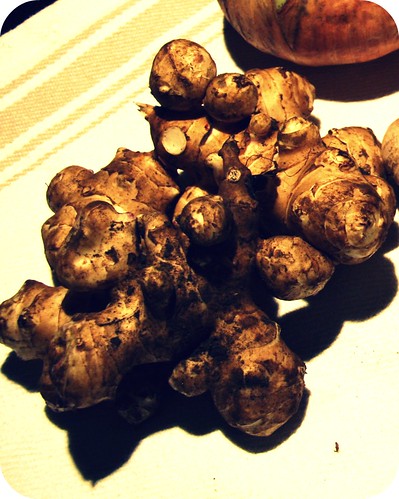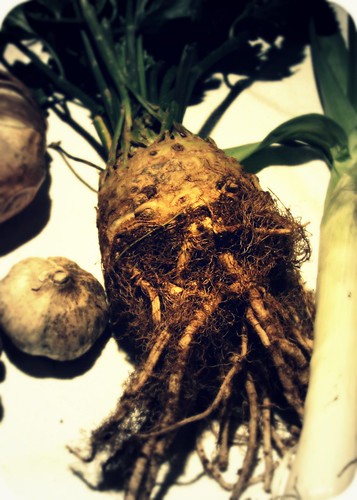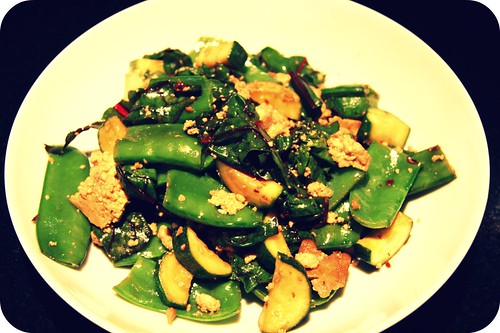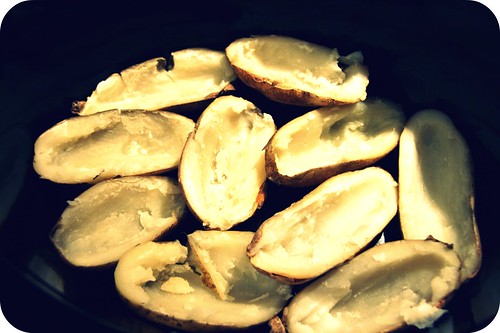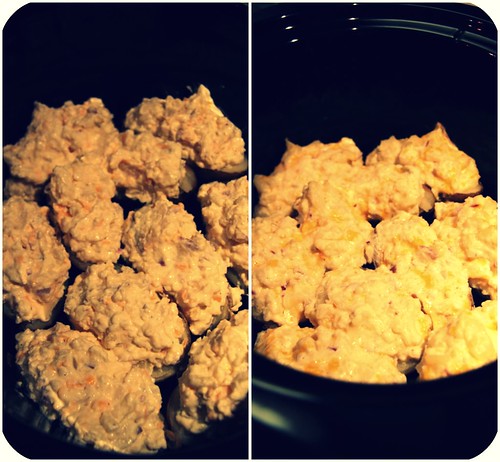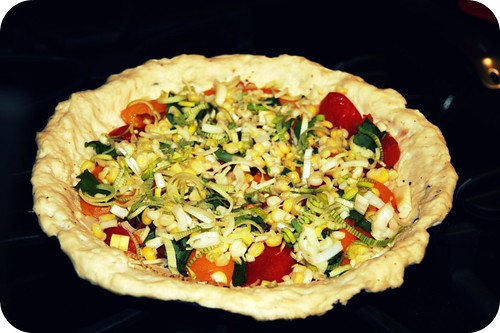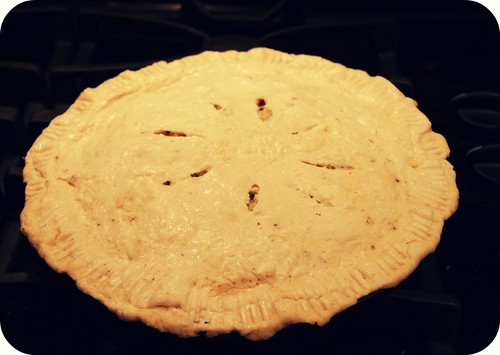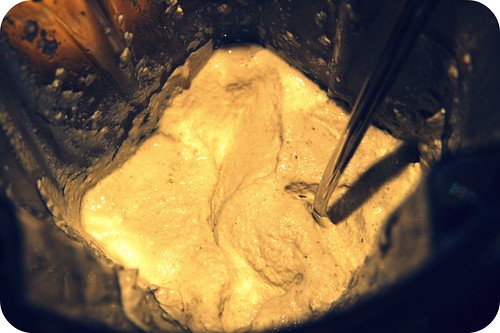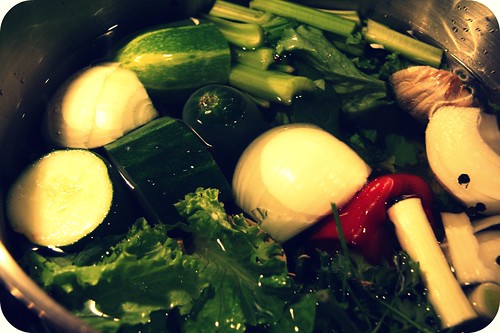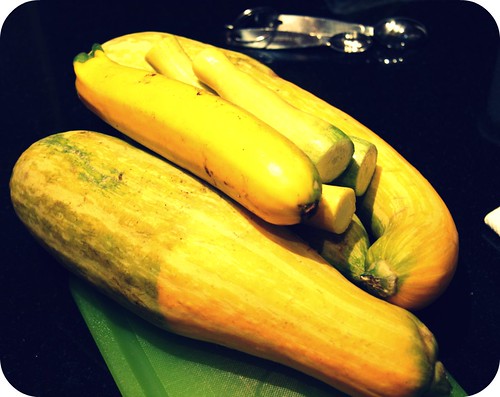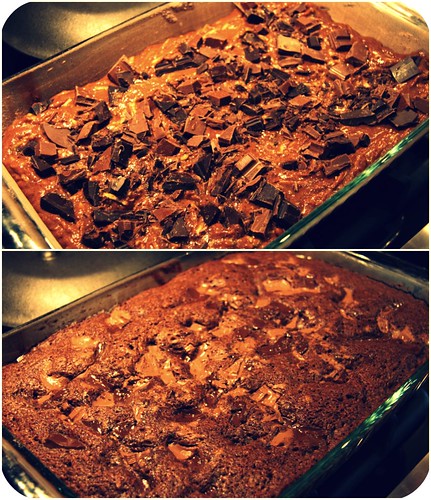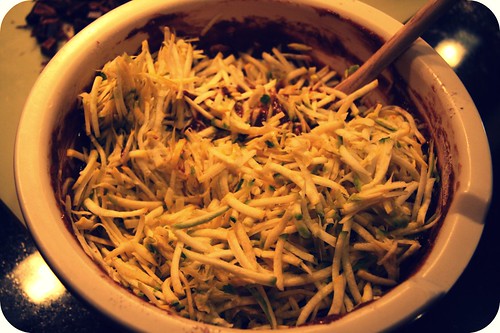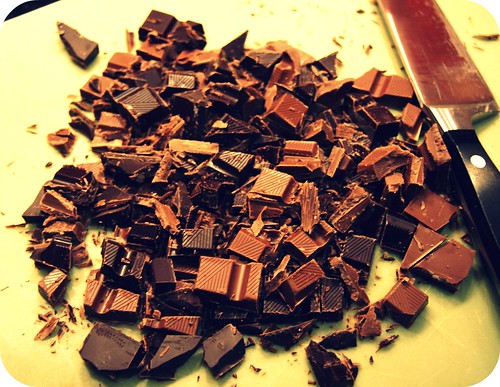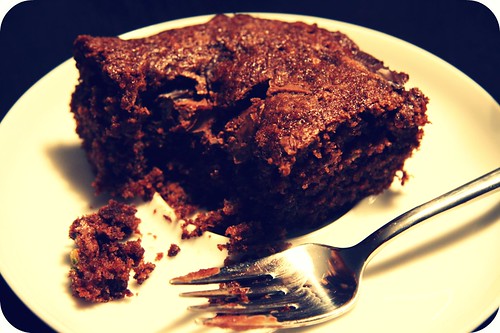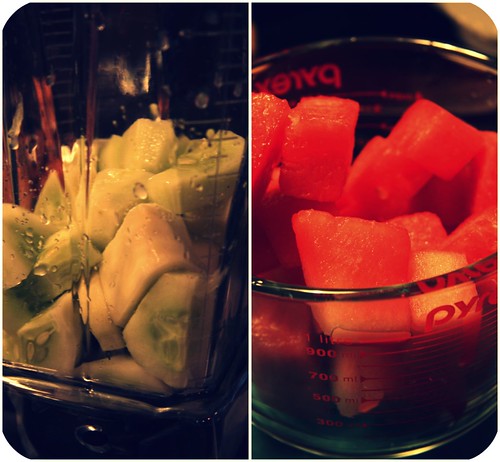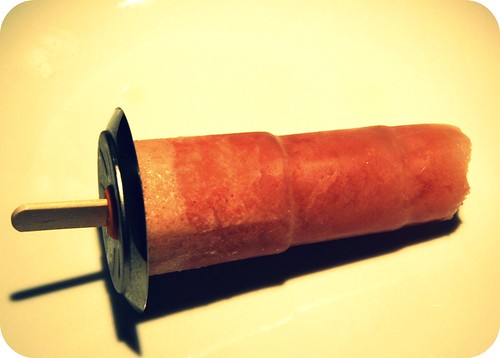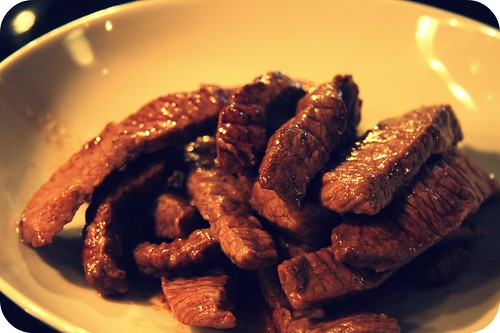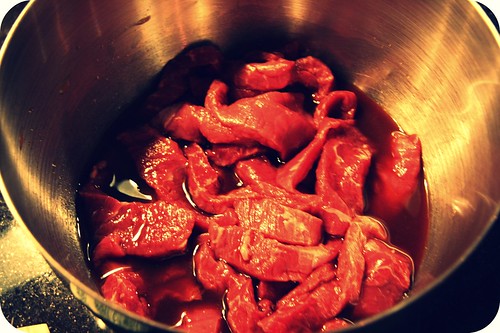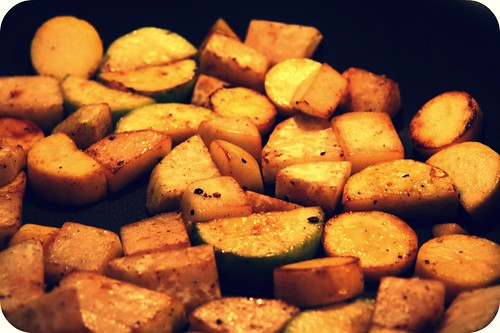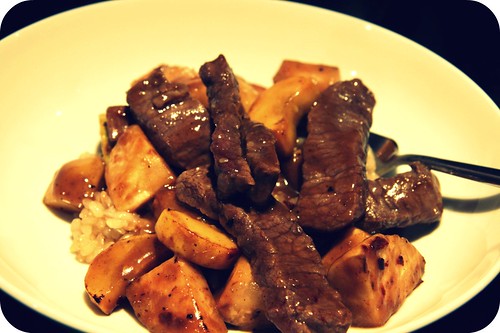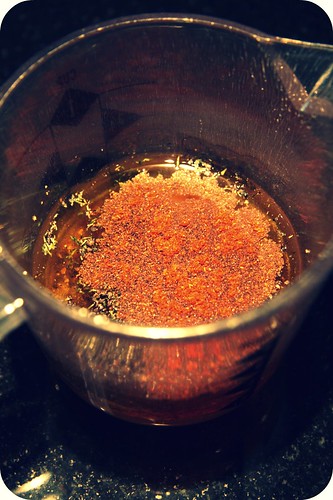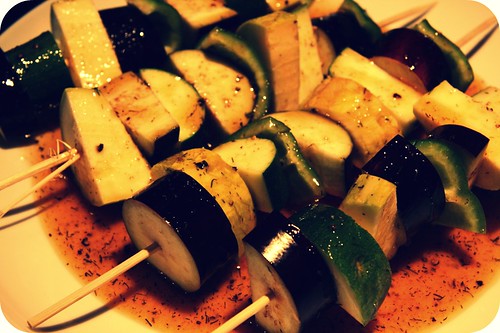These bars made me famous in the neighborhood. They also made me a little fatter than I was before I made them. Halfway through eating the whole pan on my own is when I decided to go on a walk and share them with the locals.
Here's the best part: I invented them myself! (Yes. Worthy of an exclamation point!) And while the crumbly topping didn't do exactly what I'd envisioned - I think only even more butter would have accomplished what I was going for - the finer, not-super-sweet crumble that resulted, marbling into the gooey baked fig preserves, was just perfect. Far better, in fact, than what I envisioned.
I've been wanting to make something combining fig and orange for a while now. "Figgy pudding" is sort of a mythical British dessert with dried fruit and orange and lemon flavorings. And by mythical I simply mean that, yes, obviously, I'm sure it at one point it existed and was popular enough to make an appearance in a Christmas song, but it doesn't really exist now. Nevertheless, this American gal who opened a cupcake shop in London, either wanting to bring it back or maybe unaware of the treat's extinction, offered a "figgy orange" cupcake when I visited a few years back, and it was excellent. So for three years now I've been keeping my eye out for some kind of figgy orange recipe with zero success. And you know, when things don't come to you readily is when you get creative - Anne Bogart taught me that. So true. Hence, my little, luscious, delicious concoction.
(When starting from scratch, the use of massive amounts of butter helps to guarantee something wonderful.)
My favorite part was when I took the pan out of the oven and the fig preserves were all shiny and magical and aromatic. I couldn't wait for them to be cool enough to handle.
And then my patience paid off; they were as good as they smelled and looked and I was v. pleased with myself. So pleased that I felt it was okay to eat half of them. That's the trouble with "bite-sized pieces" - TOO MANY BITES.
Figgy Orange Shortbread Bars
From Yours Truly
Yield: 1 serving. Just kidding. About 50 or 60 bite-sized bars.
For shortbread
2 cups flour (I used whole wheat - it tasted good)
1/2 cup brown, turbinado, or muscovado sugar
1 tablespoon orange zest (from one whole orange)
1 cup butter, cold and cut into 1/2" cubes (that's 2 sticks, baby, and it's what makes shortbread wonderful)
For filling
1 cup fig preserves, heated on stove so that it's easy to spread
For crumble topping
1/2 cup flour
1/2 cup brown, turbinado, or muscovado sugar
1/4 cup butter, cold and cut into 1/2" cubes
1/2 teaspoon cinnamon
1/8 teaspoon nutmeg (optional, but nice)
1/8 teaspoon cardamom (also optional, but nice)
Preheat oven to 350 degrees.
Whisk together flour, sugar, and orange zest. Place in food processor or stand mixer (or use your hands), add 1 cup butter, and pulse until a thick, crumbly dough forms. Knead with your hands a couple of times and then flatten into an ungreased 13 X 9" pan. Bake for 10-12 minutes, until dough is dry and perhaps darkening slightly around edges.
Meanwhile, make your crumble: either pulse all the ingredients together in the food processor until fine crumbs form, or just mix it all with your hands in a large bowl. The mixture will be quite sandy but should have some larger, buttery chunks as well.
Remove shortbread from oven and drizzle fig preserves on top, evenly distributing the preserves as well as you can. Sprinkle sandy crumble mixture evenly over the top of preserves. Bake for 20-25 minutes, until fig preserves are shiny, gooey, and bubbling around the edges, and the crumbs are starting to brown a bit.
Allow to cool completely before cutting and consuming them.

